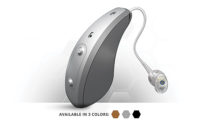Standardization Helps Medical Device Manufacturer Produce Custom Orthotics

Lean training has helped Boston Orthotics and Prosthetics improve quality, reduce lead times and eliminate waste. Photo courtesy Boston Orthotics and Prosthetics
Based in Avon, MA, Boston Orthotics and Prosthetics makes products to treat scoliosis, infant cranial asymmetry and other orthopedic issues.
In 2005, the company embarked on a lean journey with help from The Greater Boston Manufacturing Partnership (GBMP), a nonprofit firm offering customized training on lean and Six Sigma. Boston Orthotics reorganized 90 percent of its manufacturing facility, implemented new software, and made significant productivity gains throughout the organization.
However, the company soon realized that while the training had been extremely effective on the production floor, few employees from other departments received lean training or were expected to incorporate continuous improvement into their work. In 2015, the company set out to fix that oversight. Boston Orthotics began working with Bob Elliott, GBMP’s continuous improvement manager, to apply lean across the entire organization.
Clinicians and customer service reps attended lean classes and learned how to eliminate waste in their processes. Then, cross-functional teams set out to tackle a range of improvement projects. A key early project was to standardize the layout and usage of various forms. To begin, the team started with the form for specifying ankle and foot orthoses (AFO).
Clinicians felt challenged by the concept of having a standard for something that they felt could not be standardized. They felt their work was more an art than a science—each AFO is custom-designed for a specific patient with a specific need. How could that be standardized?
“The clinicians had to understand the need for a standardized process from the perspective of fellow team members from production and customer service,” says Elliott. “This helped them see that a basic guideline to follow, some key steps, could be the same regardless of the customization required for the product. If they could do this, all of the departments would benefit, and Boston Orthotics would be able to provide a superior patient experience and braces to all its customers.”
Elliott stressed that standardization would bring people together. “Having the team work together empowered employees—the process owners—to want to understand each department’s role in the AFO process, to learn what other departments need to do to make everyone’s job better, and most importantly, to ensure the accuracy of the process from when a clinician first meets and measures a patient to the time the brace is completed,” he says.
For the next few months, the team met regularly to define the process and identify what worked and what needed to be changed. The form went through many iterations. Each time a revision was introduced, the team got input from clinicians, service reps and production workers so they could refine both the form and the process.
The results were dramatic. The amount of vital information not provided to production after the initial consult was drastically reduced, and the need for customer service to call clinicians to get missing details or data clarification has largely been eliminated. Missing information no longer results in manufacturing errors.
“The improved [AFO form] has made identifying potential defects much easier,” says Judy Smith, a customer service representative for Boston Orthotics. “Questions and omissions jump right out at you and can be addressed prior to submission to production.”
In the first year since implementing the new system, product returns were reduced by 64 percent. “The new forms and standards allow clinicians to order lower limb devices more efficiently and receive a consistently higher quality product,” says John Shimkus, a certified orthotist at one of the company’s clinics.
There has also been a 31 percent reduction in product refunds, resulting in a savings of more than $3,500 in the first year. Using the new forms and standards has also provided better flow through the shop. Forms are cleaner and standards are understood, so there are fewer questions and work stoppages. Production has also seen a big drop in the need for rework.
Looking for a reprint of this article?
From high-res PDFs to custom plaques, order your copy today!





